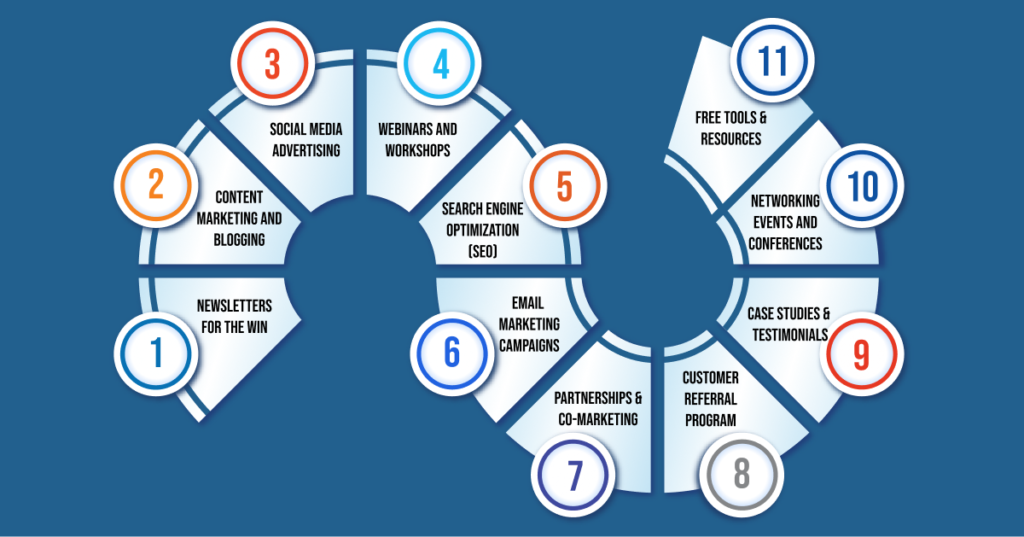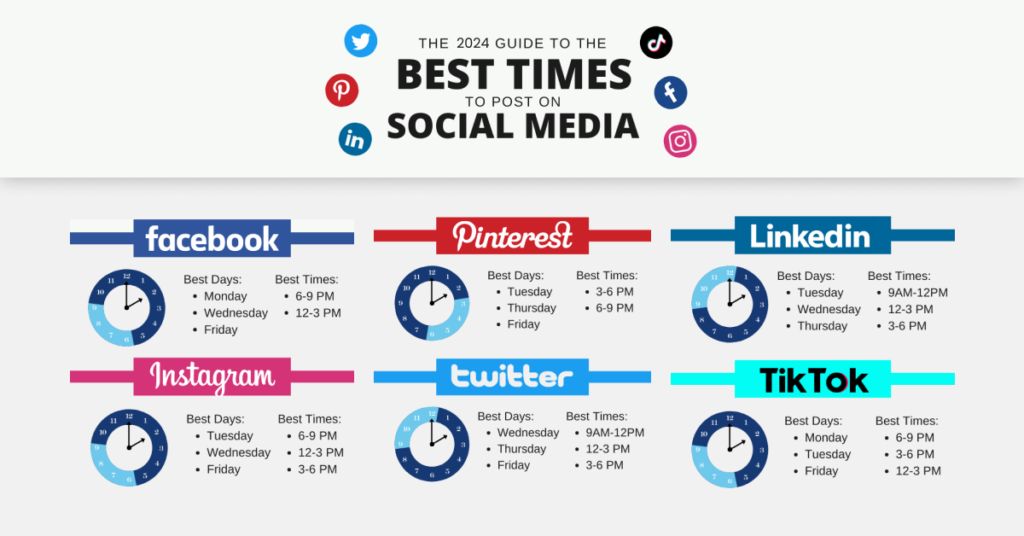
11 Lead Generation Strategies: How to Generate Leads for SaaS Businesses
-
By Shamsher Singh Bhullar
-
10th May 2024
Did you know that you need to generate at least 50 quality leads to gain one customer? A lead is someone who fits your business’s ideal customer profile and discovers your company. In general, they’re keen to learn about your business.
On the other hand, a quality lead is when an individual visits your website and provides their contact information by filling out a form. For instance, if you run an HR management software that helps HR professionals manage their data, your website must reflect that information.
Here’s the big question: if you needed to generate thousands or even tens of thousands of quality leads, how would you do it? The answer is cracking the code for lead generation.
In this blog, we’ll plunge into sure-shot strategies for lead generation for B2B SaaS. It entails 11 foolproof strategies so that you never fall off track from collecting high-quality leads.
What is Meant by Lead Generation for B2B SaaS?
Now that you’re familiar with what a lead is, let’s learn about what is B2B lead generation for SaaS.
Lead generation for B2B SaaS is the process of identifying the right set of business organizations or enterprises that show interest in your software service. In other words, they have the potential to buy from you and can be your future customers.
Lead generation for SaaS business is more of a spiral than a straight process. The first ignition to identify your potential clients is when they interact with your service. For instance, if someone visits your website and signs up for a newsletter, he’s a potential customer.
No one does it better than Salesforce. For instance, it has added a chatbot to register website visitors’ queries, which are a direct reflection of potential customers.

Lead generation for B2B SaaS is the first step in guiding users into the sales or marketing funnel. Most individuals think that advertising is the only way to attract leads. However, this is not true. Lead generation for SaaS includes the following strategies:
- Content marketing
- Email marketing
- Pay-Per-Click (PPC) ads
- Organic marketing
- Cold calling
- Website optimization
- Event Marketing
Why is Lead Generation for SaaS Important?
Fundamentally, B2B lead creation is important to the business, sales, and marketing departments. Without lead creation, there wouldn’t be any leads to move through the sales funnel, no conversions, no clients, and no further business.
Apart from functioning as an organization’s lifeblood, B2B lead generation also furnishes crucial data to marketing representatives, sales representatives, and sales development representatives (SDRs), who are the people in the background.
Note: When practicing lead generation for SaaS, sales-qualified leads should be considered a high priority as they’re more likely to convert than marketing leads.
It is important to implement SaaS lead-generation strategies for the following reasons:
- To filter ideal customers
- Boost brand awareness and online visibility
- Enhance conversion rate
- Generate high revenue
- Optimize sales pipeline flow
What is the Process for B2B Lead Generation for SaaS?

Lead generation is a crucial part of inbound marketing and a pivotal process of the marketing funnel. Bringing awareness about your brand is how you can attract new leads. As discussed earlier, leads are nothing but a bunch of individuals interested in your service.
The following are the well-defined process of lead generation for your B2B SaaS business:
1. Creating a Buyer Persona
It is important to find the right product-market fit. Therefore, you must find what an ideal customer looks like for you. You must craft a clear picture of the following characteristics of your ideal customer (buyer persona):
- What are the preferences of your buyer persona?
- What are the pain points of your ideal customer?
- What are the interests of your buyer persona?
- What are the demographics of your buyer persona?
2. Leveraging Marketing Tactics
After figuring out the buyer persona, you must choose a solid strategy to target it. You can target the ideal businesses through social media posts, blog posts, landing pages, and squeeze pages (landing pages with newsletter sign-up prompts).
3. Lock In the Prospect
The purpose of lead generation for B2B SaaS is to create a consistent influx of businesses that can convert into actual clients. In case these leads become inactive, you can retarget them through social channels, email retargeting, etc.
Top-Notch Strategies for Lead Generation for SaaS Companies
It’s time to address the elephant in the room: how to generate leads for SaaS businesses. This section discusses B2B SaaS lead generation strategies. These strategies are a great option to adopt when you don’t want to opt for cold-calling or perform offline sales. To make it easy for you, we’ve considered the example of Human Resource Management (HRM) software to understand the B2B dynamics of the business landscape.
Let’s begin!

1. Newsletters for the Win
Newsletters serve as a valuable tool for engaging with potential lead generation and practicing how to generate leads for SaaS on a regular basis. For example, an HRM software company could curate content for its newsletters that includes industry news, tips for improving HR processes, case studies showcasing successful implementations of its software, and upcoming events or webinars.
It is a great starter strategy for lead generation for SaaS businesses, as they can collect email addresses from prospective clients and reach out to them personally later on.
By providing a mix of educational and promotional content, the newsletter keeps the software top-of-mind and positions it as a trusted resource in the HR space.
2. Content Marketing and Blogging
Content marketing serves as the backbone of the entire inbound marketing strategy and is one of the best practices for SaaS lead generation. Content marketing, particularly through blogging, allows HRM software companies to demonstrate their expertise and provide solutions to common challenges faced by HR professionals.
By publishing in-depth articles, how-to guides, and case studies on topics relevant to their target audience, such as talent acquisition strategies, employee engagement tactics, and compliance issues, the software can attract leads who are actively seeking solutions to their HR problems.
Additionally, maintaining a regularly updated blog can improve the software’s search engine visibility and drive organic traffic to its website. Remember to refresh your content according to prospects’ latest needs to grab their attention.
Pro Tip:
Don’t know how to generate leads for SaaS? You can create content according to the marketing funnel that works for your enterprise or business organization.
3. Social Media Advertising
Social media advertising, particularly on platforms like LinkedIn, provides HRM software companies with the opportunity to target their ideal audience of HR professionals. You can also use other social media channels, such as Instagram, Twitter, TikTok, Pinterest, Reddit, and Quora, to attract leads.
Note: Posting at the right time matters in the long run. For a time guide, refer to the following.

Through targeted advertising campaigns, the software can reach users based on factors such as job title, industry, company size, and interests. For example, the software could create sponsored content or display ads that highlight specific features or use cases of the software, driving traffic to landing pages where leads can learn more and sign up for a free trial or demo.
Therefore, social media advertising is another result-oriented B2B SaaS lead generation strategy.
4. Webinars and Workshops
Hosting webinars and workshops allows HRM software companies to engage with potential leads in a more interactive and educational format to generate direct leads for B2B SaaS businesses. By addressing common pain points and challenges faced by HR professionals, such as performance management, employee training, or remote workforce management, the software can demonstrate its value proposition and provide practical solutions.
For example, a webinar on effective onboarding strategies could showcase how the software simplifies the onboarding process and improves employee satisfaction and retention.
5. Search Engine Optimization (SEO)
Search Engine Optimization (SEO) is not just related to ranking long-form content; it also plays a pivotal role in raking landing pages, websites, and even My Google Business Profile. Therefore, SEO is another undermined SaaS lead generation strategy.
For example, SEO is crucial for ensuring that HRM software companies’ websites rank prominently in search engine results pages (SERPs) when potential leads are searching for relevant keywords or phrases.
By optimizing website content, meta tags, and site structure for keywords related to HRM software and related topics, such as HR automation, payroll management, and talent acquisition, the software can attract organic traffic from users actively seeking solutions in the HR technology space.
6. Email Marketing Campaigns

Email marketing campaigns allow HRM software companies to nurture leads through the sales funnel by delivering personalized content and offers directly to their inbox.
By segmenting leads based on factors such as industry, company size, or stage in the buyer’s journey, the software can send targeted emails that address the specific needs and pain points of each segment.
For example, a lead who has downloaded a whitepaper on employee engagement could receive follow-up emails with case studies showcasing how the software has helped other companies improve employee morale and productivity.
7. Partnerships and Co-marketing
You can explore other channels such as partnerships for outbound lead generation services for B2B SaaS businesses.
As in the case of an HRM firm, forming partnerships with complementary businesses or industry associations can help HRM software companies expand their reach and attract new leads. By collaborating on joint marketing initiatives, such as co-hosting webinars, creating co-branded content, or participating in industry events together, the software can leverage the partner’s existing network and credibility to reach a wider audience of potential leads.
For example, partnering with a recruitment agency could lead to mutually beneficial opportunities for cross-promotion and lead generation.
8. Customer Referral Program
Don’t know how to generate leads for SaaS? Use a customer referral program. Implementing a customer referral program incentivizes satisfied customers to refer their colleagues or connections to the software, effectively turning them into brand advocates. By offering rewards such as discounts, credits, or exclusive access to new features for each successful referral, the software can encourage customers to actively promote the product to their networks.
For example, a customer who has had success with the software in streamlining their recruitment process may be more inclined to refer other HR professionals in their network who are facing similar challenges.
9. Case Studies and Testimonials
Case studies and testimonials provide social proof of the software’s effectiveness and help build credibility with potential leads. By showcasing real-world examples of how the software has helped other companies solve their HR challenges and achieve tangible results, such as increased efficiency, cost savings, or employee satisfaction, the software can demonstrate its value proposition and differentiate itself from competitors.
You can also add a star-feature rating to your business. According to a recent post by ExplodingTopics on Twitter,
Only 6% of consumers say star ratings don’t affect their choices.
38% of shoppers won’t do business with a brand unless they have a 4-star rating.
21% need to see at least a 3.5 rating, and 12% are happy to settle for 3 stars.
Source: BrightLocal
When considering the example of HRM software, featuring testimonials from HR professionals who have successfully implemented the software and seen measurable improvements in their processes can reassure potential leads of its efficacy and reliability.
10. Networking Events and Conferences
Attending industry events and conferences provides HRM software companies with valuable opportunities to network with potential leads and showcase their product to a targeted audience. By sponsoring booths, hosting networking sessions, or participating in panel discussions and speaking engagements, the software can increase brand visibility and establish thought leadership in the HR technology space.
For example, hosting a live demonstration of the software at a major HR conference allows attendees to interact with the product firsthand and learn more about its features and benefits.
11. Free Tools and Resources
Offering free tools and resources related to HR allows HRM software companies to attract leads who are seeking solutions to specific challenges. By providing value upfront and demonstrating expertise in the HR domain, the software can position itself as a trusted resource and build rapport with potential leads.
For example, offering a free HR audit tool or template for creating employee performance evaluations not only helps HR professionals address immediate needs but also introduces them to the software’s capabilities and encourages further engagement.
Wrapping Up
It’s a wrap on how to generate leads for SaaS. Lead generation for SaaS businesses requires a keen eye for detail and intricacy. In addition to cold-calling and door-to-door sales, understanding the value of various social media and other rich resources is important. You can prepare a concoction of educational and promotional content on various channels to attract your prospective clients. At the end of the day, businesses seek pure value, and you must be able to fulfill their requirements.
FAQs:
What is meant by lead generation for SaaS?
Lead generation for SaaS business refers to the process of identifying the right set of business organizations or enterprises that show interest in your software service. In other words, they have the potential to buy from you and can be your future customers.
What are the best practices for lead generation for SaaS companies?
The best practices for B2B SaaS lead generation include leveraging web blogging and content advertising, Search Engine Optimization (SEO), newsletters, creating free tools and resources for the prospects, running email marketing campaigns, and creating partnerships with other businesses to get an influx of prospects.
What are the best social channels for B2B lead generation for SaaS?
The best social channels for B2B SaaS lead generation include social media platforms such as Instagram, Facebook, Pinterest, Twitter, Reddit and TikTok. You can also use newsletters to attract prospective businesses.
How to create inbound leads in SaaS?
You can create a consistent influx of leads for your SaaS business by applying top-of-the-funnel, middle-of-the-funnel and bottom-of-the-funnel strategies. You can work on social media posts and blog posts to create inbound leads. You can also create content for all stages of the buyer’s journey and create whitepapers and ebooks.
Recent Articles
-

Unity vs Unreal Engine 5: Which is Better?
-

Non-Negotiable Tips for Developing a P2P Lending Platform
-

The 8 Leading Cross-Platform App Development Frameworks You Should Know
-

Step-by-Step Guide: How to Build a dApp on Ethereum with Ease
-

Why Does Your Business Need Blockchain Development Company’s Expertise?

Shamsher Singh Bhullar
 10th May 2024
10th May 2024